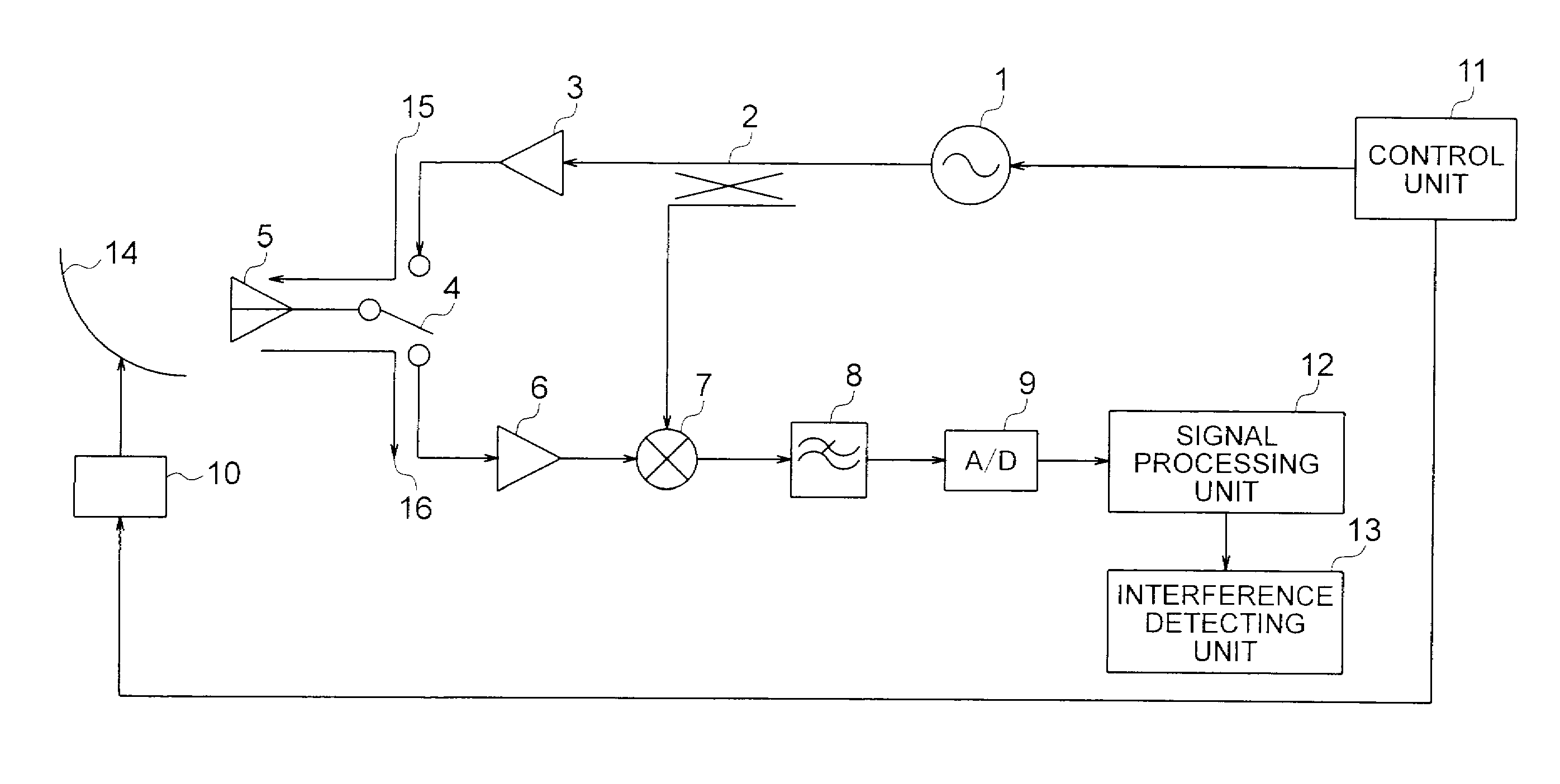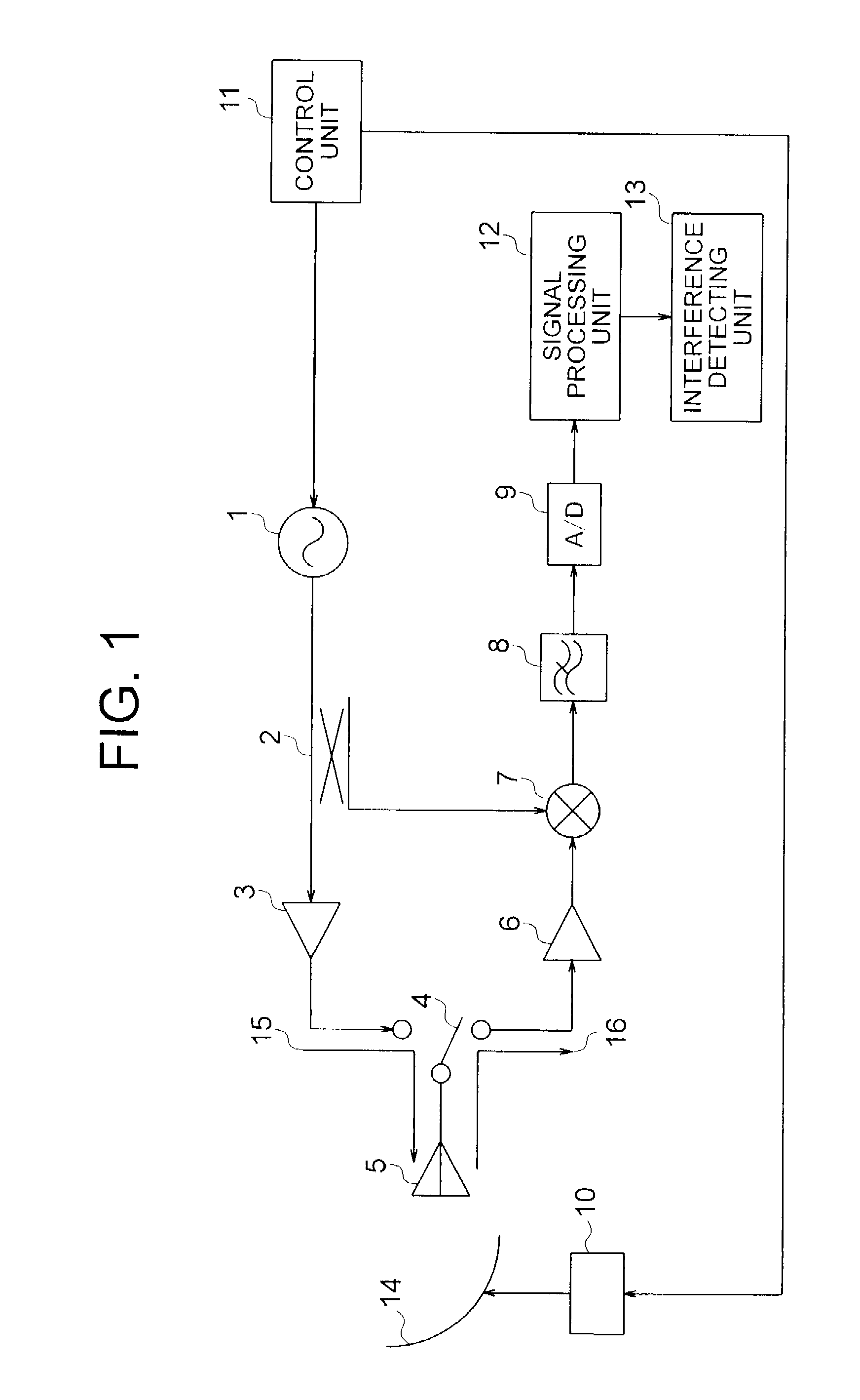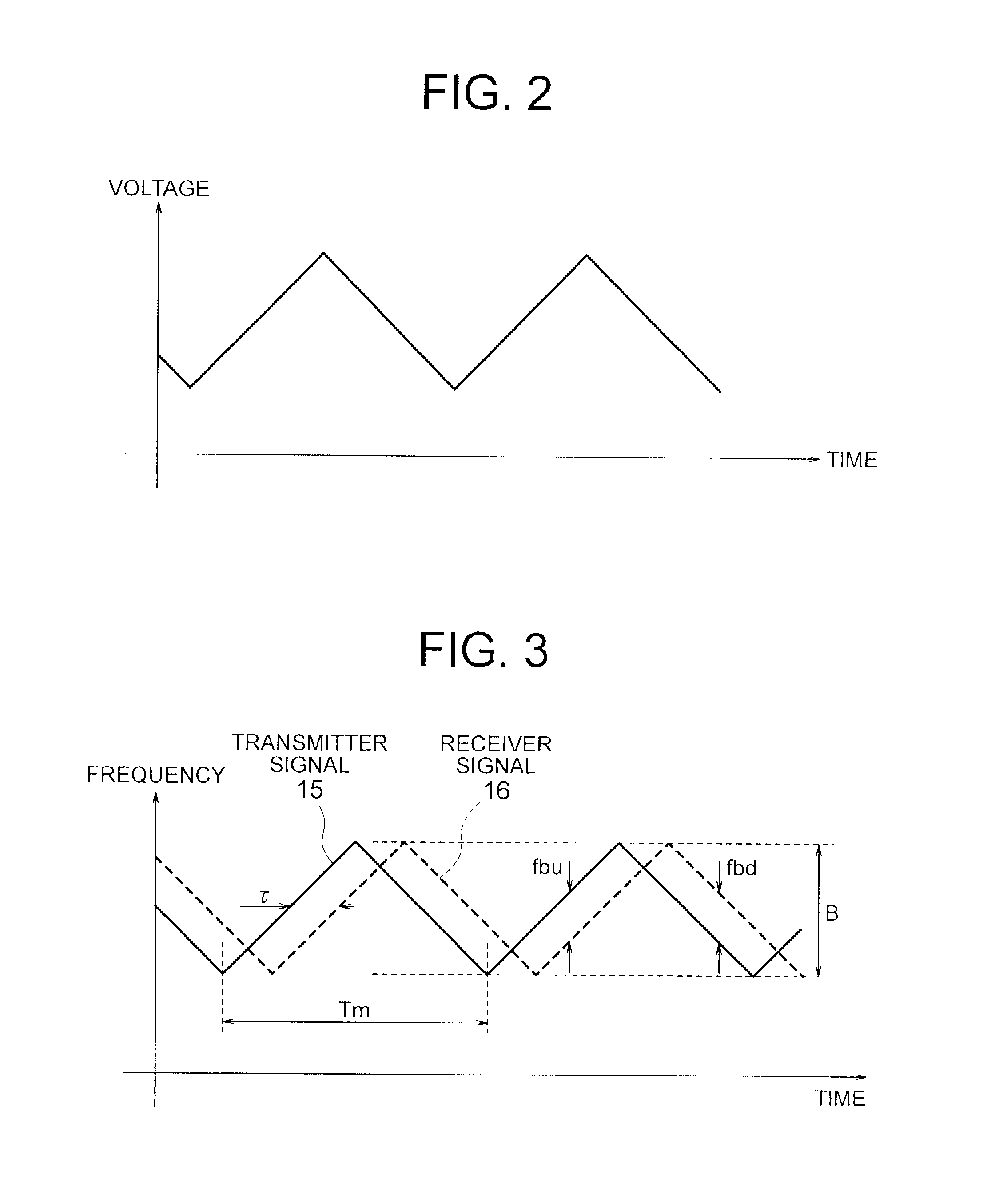Radar device
a technology of a radar and a distance sensor, which is applied in the direction of measurement devices, communication jamming, instruments, etc., can solve the problems of reducing the period of time during which the distance to the target and the relative velocity of the target can be measured, the control of the vehicle, and the inefficiency of the measuremen
- Summary
- Abstract
- Description
- Claims
- Application Information
AI Technical Summary
Benefits of technology
Problems solved by technology
Method used
Image
Examples
first embodiment
[0025]FIG. 1 is a block diagram showing a configuration of a radar device according to a first embodiment of the present invention. The radar device shown in FIG. 1 represents a radar device of an FM - pulse Doppler system, and includes, as a transmitter circuit, a voltage control oscillator 1 for generating a signal according to an applied voltage waveform, a directive coupler 2 for supplying the signal that is outputted from the voltage control oscillator 1 to a transceiver circuit, an amplifier 3 for amplifying an output signal of the directive coupler 2, a transmission / reception changeover switch 4 for changing over the transmission / reception of the radar, and a transmission / reception antenna 5 for both of transmission and reception.
[0026]Also, the radar device shown in FIG. 1 includes, as a receiver circuit, a low-noise amplifier 6 for amplifying a receiver signal, a mixer 7 for mixing a receiver signal which is an output signal of the low-noise amplifier 6 with a transmitter s...
second embodiment
[0048]A second embodiment is identical in the configuration with the first embodiment except that the interference detecting unit 13 monitors whether the signal intensity in the frequency range that is not used for measurement of the distance to the target and the relative velocity of the target exceeds the threshold value or not, in the plurality of range gates that are equal to or more than a given rate, and it is determined that the interference occurs in the case where the signal intensity exceeds the threshold value in the monitored range gates.
[0049]According to the second embodiment, since it is determined whether the interference occurs or not, by using not all of the range gates, but the plurality of range gates of the given rate or more, it is possible to determine that the interference occurs with a high precision and at a higher speed than that of the first embodiment.
third embodiment
[0050]A third embodiment is identical in the configuration with the first embodiment except that the interference detecting unit 13 monitors whether the signal intensity in the frequency range that is not used for measurement of the distance to the target and the relative velocity of the target exceeds the threshold value Ith or not, in a given range gate, and it is determined that the interference occurs in the case where the signal intensity exceeds the threshold value in the monitored range gate.
[0051]In the case where the longest distance range gate is used as the given range gate, the maximum frequency fb_max(n) (Hz) of the beat signal which is used for measurement of the distance to the target and the relative velocity of the target is the largest. Therefore, because the frequency range that is not used for measurement of the distance to the target and the relative velocity of the target is narrow, that is, a range in which the interference is monitored is narrow, the amount o...
PUM
 Login to View More
Login to View More Abstract
Description
Claims
Application Information
 Login to View More
Login to View More - R&D
- Intellectual Property
- Life Sciences
- Materials
- Tech Scout
- Unparalleled Data Quality
- Higher Quality Content
- 60% Fewer Hallucinations
Browse by: Latest US Patents, China's latest patents, Technical Efficacy Thesaurus, Application Domain, Technology Topic, Popular Technical Reports.
© 2025 PatSnap. All rights reserved.Legal|Privacy policy|Modern Slavery Act Transparency Statement|Sitemap|About US| Contact US: help@patsnap.com



